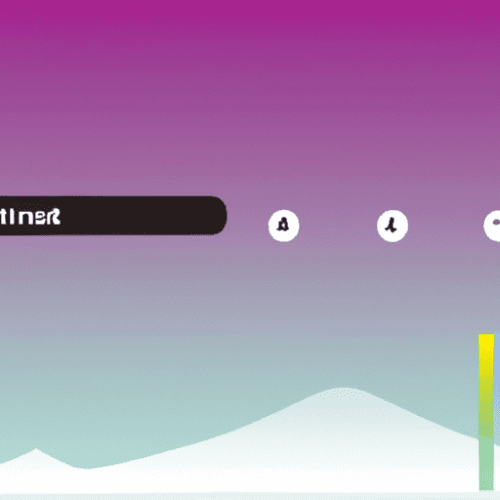
The Democratic Republic of Congo (DRC) is a nation abundant in natural resources, including vast reserves of gold, cobalt, diamonds, copper, and coltan. Despite this immense wealth beneath its soil, the DRC remains one of the world’s poorest countries by almost every standard. This puzzling contradiction—a resource-rich country grappling with widespread poverty—has drawn the attention of economists, policy makers, and concerned citizens across the globe. In this article, we’ll explore the most recent statistics on poverty in the DRC, delve into the factors behind the country’s ongoing struggles, and discuss potential pathways for change. By examining data and trends, we aim to shed light on why so much potential has translated into so little prosperity for the Congolese people.
DRC Poverty by the Numbers: An Economic Snapshot
To understand the scale and severity of poverty in the DRC, let’s first look at some key statistics, according to the latest data from the World Bank, UNICEF, and other leading organizations:
- Poverty Rate: As of 2023, about 62% of the DRC population lives below the national poverty line.
- Extreme Poverty: Over 70% survive on less than $1.90 a day (international poverty line).
- GDP per Capita: In 2023, the DRC’s nominal GDP per capita was estimated at just $614, among the lowest globally.
- Rural Poverty: Poverty is higher in rural areas, affecting 76% of rural inhabitants.
- Urban Challenges: Even in urban areas, over 42% of the population is considered poor.
- Food Insecurity: Approximately 26 million people (about 1 in 4) are experiencing high levels of acute food insecurity.
- Human Development Index: The DRC ranks 179th out of 191 countries on the United Nations Human Development Index in 2022.
- Child Deprivation: Nearly 9 in 10 children in the DRC suffer from at least two deprivations, including nutrition, education, health, or shelter.
- Unemployment: The unemployment rate remains around 5-7%, but underemployment is much higher, with most employment informal and precarious.
These numbers reflect the depth and breadth of poverty that remains endemic in the DRC, affecting all aspects of life from education and health to food security and employment.
Understanding the Causes: Why Does Poverty Persist in a Wealthy Land?
1. The Resource Curse: When Abundance Breeds Misfortune
Economists often refer to the DRC as a textbook example of the “resource curse” or paradox of plenty, where nations rich in natural resources often experience less economic growth and worse development outcomes than those with fewer resources. Several factors contribute to this dilemma in the DRC:
- Corruption and Mismanagement: According to Transparency International, the DRC consistently ranks among the most corrupt countries in the world. Revenues from mining are frequently siphoned off by elites, leaving little for public investment in health, education, or infrastructure.
- Weak Institutions: The institutions needed to manage resource wealth—such as regulatory bodies, taxation authorities, and judicial systems—lack transparency and effectiveness, enabling exploitation and poor governance.
- Conflict and Instability: Decades of violence, armed conflict, and political instability—much of it centered around control of resources—have devastated communities and infrastructure, and disrupted economic activity. More than 5 million people are internally displaced in the DRC.
- Illicit Trade and Exploitation: Smuggling and illegal extraction of minerals deprive the state of billions in revenue annually. Minerals like coltan, gold, and diamonds often leave the country via informal channels.
2. Demographic and Economic Challenges
While the DRC is the fourth most populous country in Africa, with over 100 million residents, the economy has not kept pace with population growth. Key challenges include:
- Rapid Population Growth: With an annual growth rate above 3%, the DRC’s population is expanding faster than its economy, putting pressure on services and jobs. The median age is just 17 years.
- Underdeveloped Agriculture: Despite fertile land and water resources, the sector is underdeveloped due to insecurity, poor infrastructure, and lack of investment. About 70% of the population depends on subsistence farming.
- Poor Infrastructure: Basic infrastructure (roads, electricity, clean water) is lacking, particularly in rural areas, isolating communities and impeding economic progress.
- Lack of Economic Diversification: The economy relies heavily on mining, with little manufacturing or value-addition, creating vulnerability to global price shocks.
3. Social Impacts and Ripple Effects
The consequences of poverty in the DRC go far beyond income:
- Health: Life expectancy is just 60 years, with high child and maternal mortality rates. Access to healthcare is limited by cost, distance, and conflict.
- Education: Nearly 3.5 million children are out of school, as poverty forces families to prioritize short-term survival over long-term investment in education.
- Gender Inequality: Women and girls face even deeper deprivation—higher rates of malnutrition, illiteracy, and violence.
- Displacement: Ongoing conflict forces millions to flee their homes, losing livelihoods and access to essential services.
Efforts to Combat Poverty: Progress and Challenges
Despite formidable obstacles, both the Congolese government and international community have undertaken initiatives to reduce poverty:
- Poverty Reduction Plans: The DRC’s recent Poverty Reduction Strategy Papers emphasize infrastructure development, governance reform, and investment in health and education.
- International Aid: Donors such as the World Bank, IMF, and United Nations invest billions in humanitarian relief, social protection, and capacity-building.
- Local Innovations: Civil society organizations are leading projects to empower women, improve agricultural productivity, and expand access to microfinance.
- Conflict Resolution: Peacebuilding efforts seek to reduce armed clashes and promote stability, which is key to attracting investment and rebuilding communities.
However, progress remains uneven. Without deeper reforms, stronger institutions, and a more equitable sharing of resource wealth, experts warn that poverty could remain entrenched for future generations.
Conclusion: Turning Potential Into Prosperity
The story of poverty in the DRC is both a tragedy and a rallying cry. Behind each statistic are millions of Congolese men, women, and children whose quality of life remains far below what the country’s enormous natural wealth should allow. While the hurdles are immense, so too is the potential for change.
Unlocking this potential will require more than mineral extraction—it will demand investments in people, fair and transparent governance, empowerment of marginalized groups, and sustained conflict resolution. As the DRC is poised to play an ever-greater role in the global economy—especially with the world’s increasing reliance on minerals like cobalt and coltan for technology—it is imperative that this wealth benefits everyone, not just a few.
By shining a light on reliable, up-to-date statistics and drawing attention to the factors behind them, the world can better support the Congolese people’s aspirations for a peaceful, prosperous future. After all, the fight against poverty in the DRC is not only a local struggle—it is a global responsibility.
If you want to learn more about poverty statistics by country, follow our blog for comprehensive data-driven insights and policy analysis.








